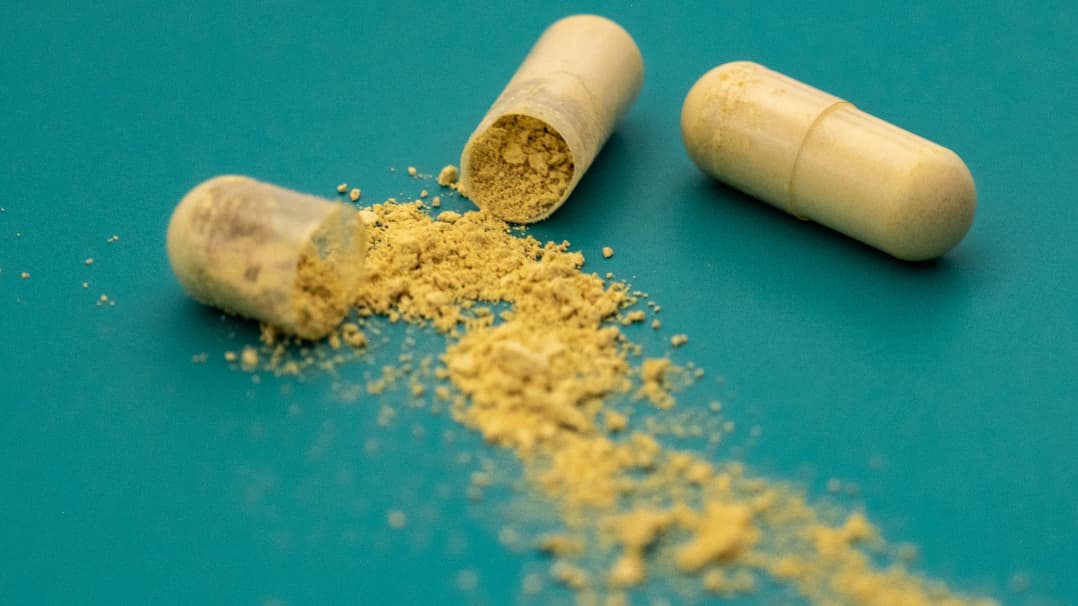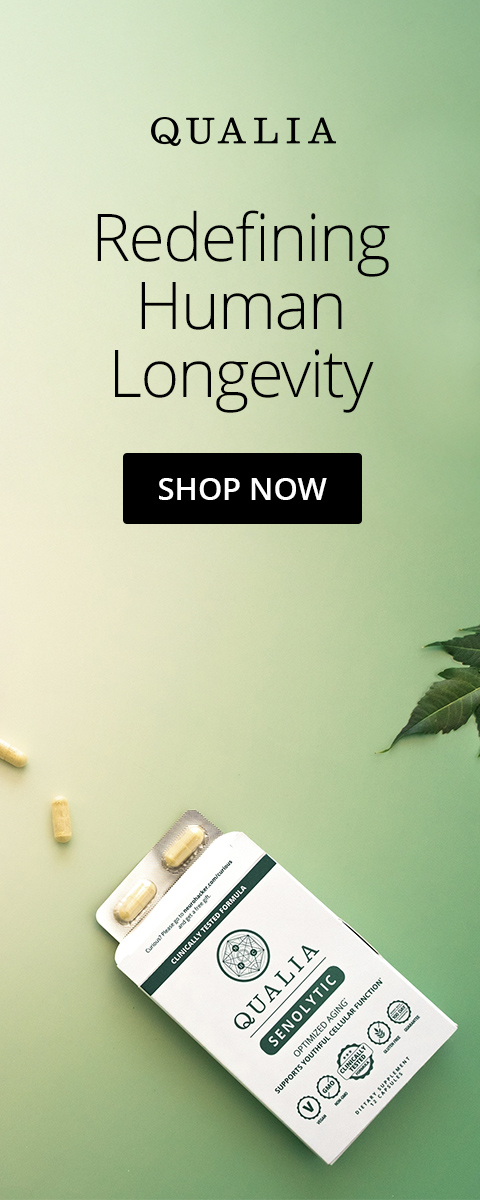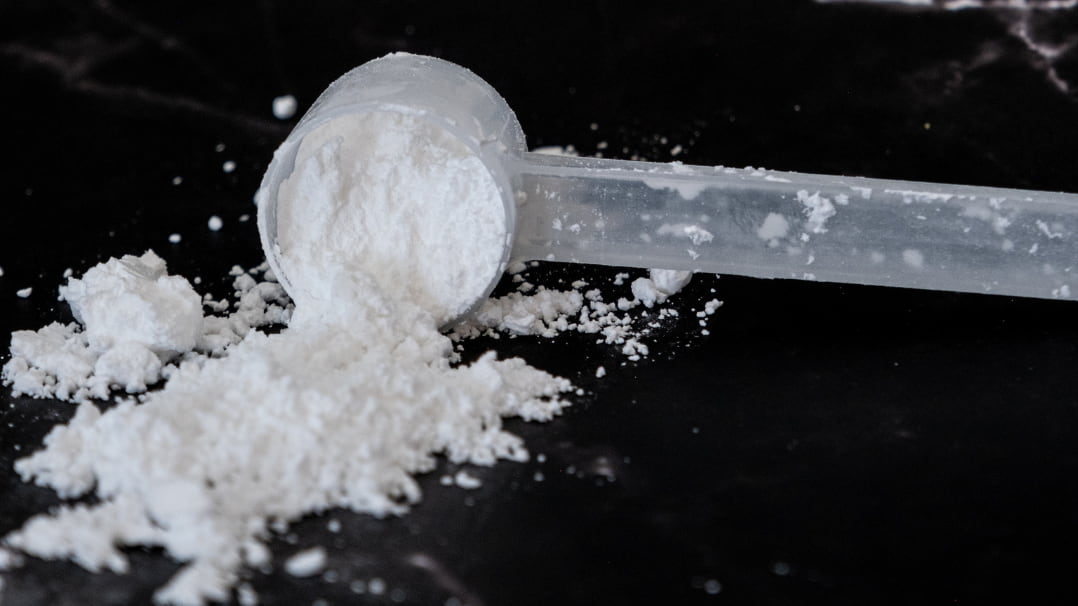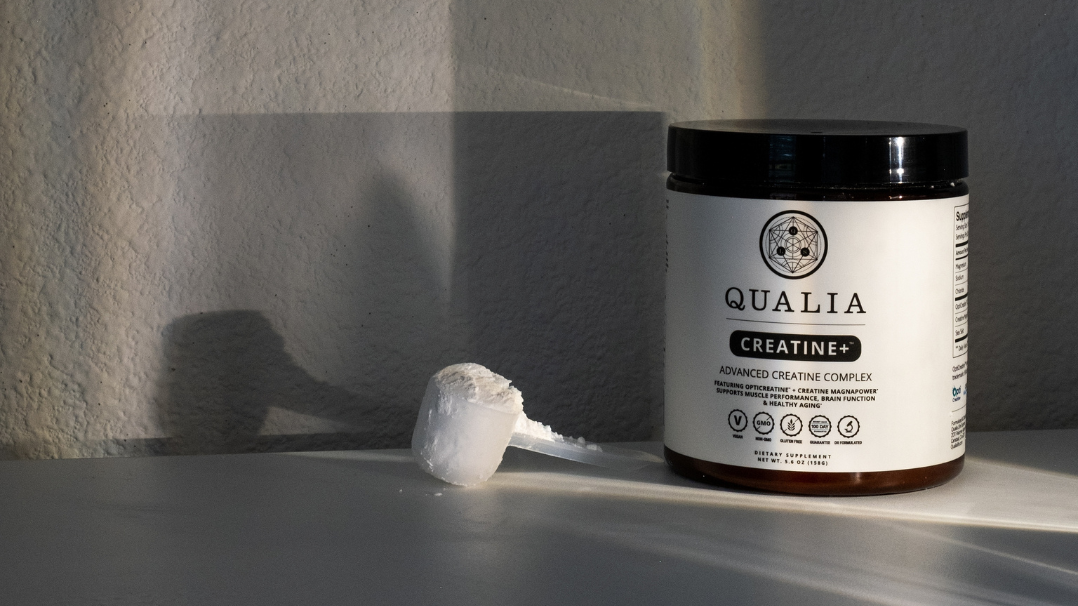Fasting has been gaining popularity as a simple approach to promote health and well-being. One way fasting may do so is by promoting a cellular housekeeping process called autophagy.
Supporting autophagy is also one of the secondary benefits of Qualia Senolytic. We’re frequently asked if fasting is compatible with taking Qualia Senolytic and what the associations and differences are between cellular senescence and autophagy. So, in this article, we’ll address some of the questions we receive regarding fasting, autophagy, and senolytics.*
What Are the Differences between Autophagy, Apoptosis, and Cellular Senescence?
Autophagy and apoptosis are both associated with the effects of senolytics and there is often some confusion as to how exactly each process differs. Both are normal cellular functions, but are very different in the roles they play. So let us clarify it for you, starting by defining each process.
What is Autophagy?
Autophagy (meaning "self-eating") occurs inside cells and is fundamentally a repair function. It is a cellular quality control process that degrades damaged molecules and cell structures through enzymatic digestion in organelles called lysosomes. Autophagy helps to maintain cellular homeostasis by removing cellular components that have lost their functionality and that could potentially disrupt cellular function. The digestion products can be recycled as building blocks for new macromolecules or organelles inside the cell. Autophagy also helps cells survive metabolic stress by breaking down macromolecules to be used as fuel for cells when nutrient availability is low [1–3], which is a main reason it’s often discussed in the context of fasting protocols.
What is Apoptosis?
Apoptosis (meaning “to fall off”) occurs at a whole-cell level. It is a programmed cell death process through which cells self-destruct in a controlled manner, without collateral damage to surrounding cells. Apoptosis occurs naturally and is essential to help eliminate aged or severely stressed cells and to prevent them from negatively affecting tissue function and health [4,5]. The controlled process of apoptosis results in cells breaking apart in an organized way into smaller, more manageable units. The immune system tidies up this cellular debris, recycling it for future use.
What is Cellular Senescence?
Cellular senescence is a cellular stress response process through which cells stop dividing but resist apoptosis. Cellular senescence is activated when a cell has become damaged beyond repair—it is past the point where autophagy can help repair it to healthy function. Cellular senescence is a protective response as long as senescent cells are eliminated by the immune system (which they recruit to do so), but when their clearance fails, they can linger in tissues and interfere with normal tissue function [6,7].
How Are Autophagy, Apoptosis, and Cellular Senescence Associated?
In general, autophagy has a protective anti-senescence function in cells—it clears damaged proteins and organelles that could potentially disrupt cellular homeostasis and trigger senescence. This helps keep cells functional and avoid cellular senescence [1,2,8].
Modulating autophagy in senescent cells may help to selectively eliminate them under specific conditions [9–11]. Some senotherapeutic compounds promote autophagy in ways that may contribute to the management of senescent cells [12].*
Senescent cells avoid elimination partly by resisting apoptosis. They do so by downregulating pro-apoptotic pathways that would lead them to death and upregulating pro-survival mechanisms, collectively known as senescent cell anti-apoptotic pathways (SCAPs) [13–15].
Senolytics support the healthy function of SCAPs, which helps senescent cells complete the process of dying. One of the mechanisms through which senolytics promote the management of senescent cells is precisely by helping them to counteract or disable their pro-survival and anti-apoptotic mechanisms and nudging them towards apoptosis [16].* Learn more about if you should take senolytics everyday.
Why is Autophagy Important for Longevity?
Autophagy is an important cellular process at any stage in life. It is a way a cell can clear out waste and damaged structures, while also repurposing the salvageable components for cellular growth [3].
However, as we age, the expression of autophagy-related genes declines, and the recycling of damaged cellular components becomes less efficient. This can affect cellular function and contribute to cellular and biological aging [17–19]. In fact, disabled autophagy is one of the hallmarks of aging [20].
In humans, reduced autophagy has been linked to the development of age-related changes akin to premature aging [3,21]. On the other hand, stimulation of balanced autophagy in model organisms has been linked to enhanced metabolic efficiency, a slower progression of aspects of aging, and the support of healthspan [22–25]. Therefore, supporting balanced autophagy through lifestyle interventions offers a promising pathway to optimize cellular renewal and support longevity.*
How Does Fasting Promote Autophagy?
Fasting is the voluntary abstention from food for a given period of time (see below for types of fasting behaviors). Because there is less food intake, the availability of nutrients for cell energy production is lower. Cells respond by activating autophagy, which breaks down damaged or superfluous cellular components for energy and repair.
Fasting is a stressor for cells. This metabolic stress activates a cascade of cellular processes that can be detrimental to cells if food deprivation and low fuel availability are prolonged. However, at low levels, the metabolic stress triggered by fasting can be beneficial for cells. This is because of a type of biological response called hormesis—a dose-effect response in which there’s a benefit at a low dose of a mild biological stressor that is damaging at a high dose [26].
The low-level stress can be beneficial because it activates cellular stress response pathways that repair damage and protect cells from the cause of stress [26], while also promoting long-lasting changes that increase long-term stress resistance and enhance protection against future challenges [27]. These responses and adaptations to mild biological stress can increase physiological resilience and support longevity [28,29]. One of the processes triggered in response to fasting is autophagy, which is activated to break down cellular components to obtain smaller molecules that can be used as fuel for energy production [30].
What Are the Types of Fasting?
Types of fasting include:
Caloric restriction: the daily caloric intake is lower for several days or weeks, usually by 20–40%.
Time-restricted feeding: food intake is routinely limited to a short time window lasting 4 to 12 hours; examples include the 16:8 method—16-hour fast, 8-hour eating window—and the 20:4 method—20-hour fast, 4-hour eating window, known as the Warrior Diet. [Note: Time-restricted feeding may also be regarded as a form of intermittent fasting, so you may see these methods being referred to as intermittent fasting in the biohacking space.]
Intermittent and periodic fasting: food intake is periodically reduced, fully or partially; examples include alternate day fasting and the 5:2 diet—5 days of normal feeding interspersed with 2 days of fasting.
Fasting-mimicking diets (FMD): structured, plant-based, low-calorie, low-protein, and low-carbohydrate diets designed to emulate the benefits of fasting while allowing for some food intake.
Optimal Fasting Length for Autophagy
Research in animals has indicated that autophagy may be promoted after 24 to 48 hours of fasting [30,31]. However, to date, there are no controlled human studies that directly measure autophagy activation (through tissue biopsies or autophagy markers, for example), so there is no conclusive data that indicates the optimal period of fasting needed to promote autophagy in humans.
You may come across sources stating that autophagy in humans may be enhanced after 24 hours of fasting, but this will be based on animal studies. Although animal research provides valuable information to support human health, animals and humans have different physiologies, so the timings may be different. The only way to know the ideal fasting length to promote autophagy in humans would be through research in humans.
So, based on the available information, we believe that fasting (i.e., completely abstaining from all food) for 24 to 48 hours is an approach most likely to support autophagy. But different types of fasting can have their own unique protocols and don’t all require completely abstaining from food (e.g., water fasts are very different than the fasting-mimicking diet)—when in doubt, follow the recommendations for the exact type of fasting behavior you implement.
Does Fasting Timing Matter?
Autophagy has a circadian rhythm in mammals, peaking during fasting periods aligned with day-night cycles (so during nighttime in humans). This is regulated by clock genes and nutrient-sensing pathways (e.g., mTOR, AMPK) [32,33].
In animal research, restricting eating to the early active phase, i.e., the hours after waking, enhanced autophagy gene expression and autophagy flux compared to late or irregular feeding [34,35].
In humans, no studies so far have assessed how the timing of fasting affects autophagy activation. Based on animal research, it is likely that aligning fasting with natural circadian rhythms (i.e., stop eating by early evening) may help to optimize autophagy. However, it is also possible that individual variability in circadian rhythms may influence each person’s ideal fasting time.
Can I Fast While Taking Qualia Senolytic, Is There an Advantage or Disadvantage?
Qualia Senolytic does not contain any significant amounts of carbohydrates, protein, or fat that may disrupt a fasting period, so we consider it compatible with the different types of intermittent fasting. We don’t know how combining Qualia Senolytic and fasting will impact autophagy and senescent cell management, and if there are any advantages or disadvantages in combining them. We don't know if they are additive, but we also have no reason to believe one would interfere with the other.* Learn more about Qualia Senolytic ingredients.
*These statements have not been evaluated by the Food and Drug Administration. This product is not intended to diagnose, treat, cure, or prevent any disease.
References
[1]P. Boya, F. Reggiori, P. Codogno, Nat. Cell Biol. 15 (2013) 713–720.
[2]S. Liu, S. Yao, H. Yang, S. Liu, Y. Wang, Cell Death Dis. 14 (2023) 648.
[3]B. Levine, G. Kroemer, Cell 176 (2019) 11–42.
[4]S. Elmore, Toxicol. Pathol. 35 (2007) 495–516.
[5]M.S. D’Arcy, Cell Biol. Int. 43 (2019) 582–592.
[6]D. Muñoz-Espín, M. Serrano, Nat. Rev. Mol. Cell Biol. 15 (2014) 482–496.
[7]B.G. Childs, M. Gluscevic, D.J. Baker, R.-M. Laberge, D. Marquess, J. Dananberg, J.M. van Deursen, Nat. Rev. Drug Discov. 16 (2017) 718–735.
[8]Y. Kwon, J.W. Kim, J.A. Jeoung, M.-S. Kim, C. Kang, Mol. Cells 40 (2017) 607–612.
[9]V. L’Hôte, C. Mann, J.-Y. Thuret, Aging (Albany NY) 14 (2022) 2016–2017.
[10]V. L’Hôte, R. Courbeyrette, G. Pinna, J.-C. Cintrat, G. Le Pavec, A. Delaunay-Moisan, C. Mann, J.-Y. Thuret, Aging Cell 20 (2021) e13447.
[11]M. Wakita, A. Takahashi, O. Sano, T.M. Loo, Y. Imai, M. Narukawa, H. Iwata, T. Matsudaira, S. Kawamoto, N. Ohtani, T. Yoshimori, E. Hara, Nat. Commun. 11 (2020) 1935.
[12]L. Zhang, L.E. Pitcher, V. Prahalad, L.J. Niedernhofer, P.D. Robbins, FEBS J. 290 (2023) 1362–1383.
[13]N. Herranz, J. Gil, J. Clin. Invest. 128 (2018) 1238–1246.
[14]R. Kumari, P. Jat, Front Cell Dev Biol 9 (2021) 645593.
[15]J.M. van Deursen, Nature 509 (2014) 439–446.
[16]S. Chaib, T. Tchkonia, J.L. Kirkland, Nat. Med. 28 (2022) 1556–1568.
[17]Y. Aman, T. Schmauck-Medina, M. Hansen, R.I. Morimoto, A.K. Simon, I. Bjedov, K. Palikaras, A. Simonsen, T. Johansen, N. Tavernarakis, D.C. Rubinsztein, L. Partridge, G. Kroemer, J. Labbadia, E.F. Fang, Nat. Aging 1 (2021) 634–650.
[18]S. Kaushik, I. Tasset, E. Arias, O. Pampliega, E. Wong, M. Martinez-Vicente, A.M. Cuervo, Ageing Res. Rev. 72 (2021) 101468.
[19]J.E. Palmer, N. Wilson, S.M. Son, P. Obrocki, L. Wrobel, M. Rob, M. Takla, V.I. Korolchuk, D.C. Rubinsztein, Neuron 113 (2025) 29–48.
[20]C. López-Otín, M.A. Blasco, L. Partridge, M. Serrano, G. Kroemer, Cell 186 (2023) 243–278.
[21]D.J. Klionsky, G. Petroni, R.K. Amaravadi, E.H. Baehrecke, A. Ballabio, P. Boya, J.M. Bravo-San Pedro, K. Cadwell, F. Cecconi, A.M.K. Choi, M.E. Choi, C.T. Chu, P. Codogno, M.I. Colombo, A.M. Cuervo, V. Deretic, I. Dikic, Z. Elazar, E.-L. Eskelinen, G.M. Fimia, D.A. Gewirtz, D.R. Green, M. Hansen, M. Jäättelä, T. Johansen, G. Juhász, V. Karantza, C. Kraft, G. Kroemer, N.T. Ktistakis, S. Kumar, C. Lopez-Otin, K.F. Macleod, F. Madeo, J. Martinez, A. Meléndez, N. Mizushima, C. Münz, J.M. Penninger, R.M. Perera, M. Piacentini, F. Reggiori, D.C. Rubinsztein, K.M. Ryan, J. Sadoshima, L. Santambrogio, L. Scorrano, H.-U. Simon, A.K. Simon, A. Simonsen, A. Stolz, N. Tavernarakis, S.A. Tooze, T. Yoshimori, J. Yuan, Z. Yue, Q. Zhong, L. Galluzzi, F. Pietrocola, EMBO J. 40 (2021) e108863.
[22]Á.F. Fernández, S. Sebti, Y. Wei, Z. Zou, M. Shi, K.L. McMillan, C. He, T. Ting, Y. Liu, W.-C. Chiang, D.K. Marciano, G.G. Schiattarella, G. Bhagat, O.W. Moe, M.C. Hu, B. Levine, Nature 558 (2018) 136–140.
[23]C. Wang, M. Haas, S.K. Yeo, S. Sebti, Á.F. Fernández, Z. Zou, B. Levine, J.-L. Guan, Autophagy 18 (2022) 409–422.
[24]T. Eisenberg, M. Abdellatif, S. Schroeder, U. Primessnig, S. Stekovic, T. Pendl, A. Harger, J. Schipke, A. Zimmermann, A. Schmidt, M. Tong, C. Ruckenstuhl, C. Dammbrueck, A.S. Gross, V. Herbst, C. Magnes, G. Trausinger, S. Narath, A. Meinitzer, Z. Hu, A. Kirsch, K. Eller, D. Carmona-Gutierrez, S. Büttner, F. Pietrocola, O. Knittelfelder, E. Schrepfer, P. Rockenfeller, C. Simonini, A. Rahn, M. Horsch, K. Moreth, J. Beckers, H. Fuchs, V. Gailus-Durner, F. Neff, D. Janik, B. Rathkolb, J. Rozman, M.H. de Angelis, T. Moustafa, G. Haemmerle, M. Mayr, P. Willeit, M. von Frieling-Salewsky, B. Pieske, L. Scorrano, T. Pieber, R. Pechlaner, J. Willeit, S.J. Sigrist, W.A. Linke, C. Mühlfeld, J. Sadoshima, J. Dengjel, S. Kiechl, G. Kroemer, S. Sedej, F. Madeo, Nat. Med. 22 (2016) 1428–1438.
[25]E. Katsyuba, M. Romani, D. Hofer, J. Auwerx, Nat Metab 2 (2020) 9–31.
[26]E.J. Calabrese, G. Dhawan, R. Kapoor, I. Iavicoli, V. Calabrese, Biogerontology 16 (2015) 693–707.
[27]E.J. Calabrese, K.A. Bachmann, A.J. Bailer, P.M. Bolger, J. Borak, L. Cai, N. Cedergreen, M.G. Cherian, C.C. Chiueh, T.W. Clarkson, R.R. Cook, D.M. Diamond, D.J. Doolittle, M.A. Dorato, S.O. Duke, L. Feinendegen, D.E. Gardner, R.W. Hart, K.L. Hastings, A.W. Hayes, G.R. Hoffmann, J.A. Ives, Z. Jaworowski, T.E. Johnson, W.B. Jonas, N.E. Kaminski, J.G. Keller, J.E. Klaunig, T.B. Knudsen, W.J. Kozumbo, T. Lettieri, S.-Z. Liu, A. Maisseu, K.I. Maynard, E.J. Masoro, R.O. McClellan, H.M. Mehendale, C. Mothersill, D.B. Newlin, H.N. Nigg, F.W. Oehme, R.F. Phalen, M.A. Philbert, S.I.S. Rattan, J.E. Riviere, J. Rodricks, R.M. Sapolsky, B.R. Scott, C. Seymour, D.A. Sinclair, J. Smith-Sonneborn, E.T. Snow, L. Spear, D.E. Stevenson, Y. Thomas, M. Tubiana, G.M. Williams, M.P. Mattson, Toxicol. Appl. Pharmacol. 222 (2007) 122–128.
[28]N. Minois, Biogerontology 1 (2000) 15–29.
[29]F.Z. Marques, M.A. Markus, B.J. Morris, Dose Response 8 (2009) 28–33.
[30]M. Bagherniya, A.E. Butler, G.E. Barreto, A. Sahebkar, Ageing Res. Rev. 47 (2018) 183–197.
[31]R. Shabkhizan, S. Haiaty, M.S. Moslehian, A. Bazmani, F. Sadeghsoltani, H. Saghaei Bagheri, R. Rahbarghazi, E. Sakhinia, Adv. Nutr. 14 (2023) 1211–1225.
[32]D. Ma, S. Li, M.M. Molusky, J.D. Lin, Trends Endocrinol. Metab. 23 (2012) 319–325.
[33]X. Wang, Z. Xu, Y. Cai, S. Zeng, B. Peng, X. Ren, Y. Yan, Z. Gong, Front. Cell Dev. Biol. 8 (2020) 616434.
[34]X. Hu, J. Peng, W. Tang, Y. Xia, P. Song, Biosci. Trends 17 (2023) 356–368.
[35]Z. Yin, D.J. Klionsky, Autophagy 18 (2022) 471–472.








No Comments Yet
Sign in or Register to Comment